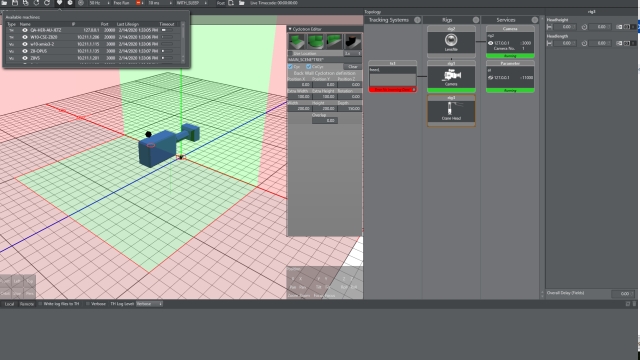In the fast-paced world of creative studios, managing both the studio itself and its clients can often feel like a chaotic juggling act. From coordinating projects to handling invoices, the demands can quickly become overwhelming. However, with the right strategies for studio management and client management, it’s possible to transform this chaos into calm.
Central to successful studio and client management is the implementation of a reliable CRM system. A CRM, or Customer Relationship Management, software can serve as the backbone of your operations by organizing client information, tracking interactions, and providing insights into your clients’ needs and preferences. By having a comprehensive view of your clients and projects, you can streamline communication and ensure that everyone is on the same page. Additionally, a CRM can assist in invoicing and financial management, optimizing the billing process and ensuring efficient cash flow.
Moreover, effective studio management involves maintaining a clear and organized workflow for your team. Establishing streamlined processes and protocols for project initiation, task allocation, and progress tracking can go a long way in fostering efficiency and minimizing confusion. By defining roles, setting deadlines, and utilizing project management tools, you can enhance productivity and keep everyone accountable.
On the client management front, communication is key. Regular and transparent communication with clients ensures that their needs are met and expectations are properly managed. Establishing open lines of dialogue enables you to gain a deeper understanding of their vision, provide status updates, and address any concerns along the way. By nurturing strong relationships with your clients, you can cultivate loyalty and enhance the chances of repeat business.
In this article, we will explore various strategies and best practices for mastering studio and client management. We will delve into the importance of a CRM system, delve into workflow optimization techniques, and delve into effective communication strategies. By implementing these insights, you will be able to navigate the intricate landscape of creative studio management and provide an exceptional experience for both your team and your clients.
Benefits of CRM Software
CRM (Customer Relationship Management) software has become an invaluable tool for both studio and client management. The adoption of CRM software brings numerous benefits to businesses of all sizes. In this section, we will explore some of the key advantages that CRM software offers.
Streamlined Communication and Collaboration:

CRM software centralizes all client-related data, including contact information, communication history, and project details. With this centralized database, studio professionals can easily access and share information within their team. Improved collaboration ensures that everyone involved is on the same page, promoting effective communication and reducing the chances of miscommunication or duplication of effort.Enhanced Client Relationship Management:
Effective client management is essential for building solid relationships and ensuring client satisfaction. CRM software provides a comprehensive view of each client, allowing studios to better understand their needs, preferences, and history with the organization. By having a clear understanding of individual clients, studios can personalize their interactions, offer tailored services, and address any concerns promptly, resulting in stronger and long-lasting client relationships.Efficient Project Management and Time Tracking:
CRM software often includes project management features that help studios streamline their workflows and manage projects more efficiently. This functionality allows studios to assign tasks, set deadlines, and track progress, ensuring that projects are completed on time and within budget. Moreover, CRM software can provide insights into how time is allocated to specific projects, enabling better resource allocation and optimization.
Client Management
The use of CRM software brings these and many other benefits to studios, ultimately contributing to improved efficiency, enhanced client satisfaction, and overall growth. In the next sections, we will further explore the advantages of studio management and invoicing software, and dive deeper into client management strategies for optimal outcomes.
Streamlining Studio Management
In order to effectively manage a studio, it is crucial to streamline processes and ensure efficiency. This not only saves time and effort but also contributes to a more organized and productive workflow. Implementing the right tools and strategies can greatly enhance studio management and contribute to overall success.
One essential tool for studio management is a customer relationship management (CRM) system. A CRM system allows studio owners to keep track of client information, project details, and communication history in one centralized location. This eliminates the need for scattered data and facilitates easy access to important information when needed. Additionally, a CRM system can automate tasks such as sending reminders and follow-ups, ensuring that nothing is overlooked or forgotten.
Another aspect of studio management that can be streamlined is invoicing. With the help of online invoicing software, studio owners can easily generate professional invoices, track payments, and send out reminders for overdue payments. This not only saves time but also reduces the chances of errors or miscommunication. Integrating the invoicing system with the CRM system can further simplify the process by automatically linking client information and project details to the generated invoices.
Furthermore, implementing effective project management strategies can greatly contribute to streamlining studio management. By breaking down projects into smaller, manageable tasks and assigning responsibilities to team members, the workflow becomes more organized and transparent. Utilizing project management tools and techniques, such as Kanban boards or Gantt charts, can help in visualizing project timelines and tracking progress. This allows studio owners to stay on top of multiple projects simultaneously and ensure timely delivery.
By utilizing CRM systems, online invoicing software, and effective project management strategies, studio owners can streamline their operations and create a more efficient and productive working environment. This not only benefits the studio itself but also enhances client management by improving communication, ensuring timely delivery of projects, and ultimately fostering stronger client relationships.
Effective Client Communication
Building and maintaining effective communication with clients is vital for a successful studio and client management process. Clear and regular communication helps to establish trust, manage expectations, and ensure that projects run smoothly from start to finish.
Active Listening: One key aspect of effective client communication is active listening. Taking the time to truly understand a client’s needs, concerns, and goals allows for better collaboration and problem-solving. Listening attentively and asking relevant questions shows the client that their input is valued and helps to foster a strong working relationship.
Consistent Updates: Regularly keeping clients informed about the progress of their projects is essential. Providing clear and concise updates, whether through phone calls, emails, or project management tools, ensures that clients are aware of any developments or changes that may arise. Promptly addressing any concerns or questions they may have demonstrates professionalism and a commitment to quality service.
Transparency and Honesty: Open and honest communication is crucial in maintaining trust and credibility with clients. It is important to be transparent about project timelines, budget constraints, and any potential challenges that may arise. Being upfront about limitations and offering realistic solutions helps to manage client expectations, prevents misunderstandings, and fosters a sense of partnership.
By implementing effective client communication strategies, studios can create a positive experience for clients, enhance customer satisfaction, and ultimately, establish long-term partnerships based on trust and collaboration.


